Rise in Purses On PGA Circuit Because of TV
Sports Network, Incorporated helps fuel the rise of purses available to PGA pros with television package in 1964
Merry Christmas!
The feature story this week is about a television broadcasting company that did not own any television stations, yet landed a broadcasting rights package with the PGA. Scroll down to read.
The PGA TOUR held Q-School last week and for the first time in a decade, they issued PGA TOUR cards. The tournament was filled with compelling stories and we highlight a few in the Clips You Might Have Missed feature below.
You still have time to get the gift that keeps on giving, once a week, for that golf history lover on your holiday gift list—a premium subscription to the Tour Backspin newsletter for as low as $5.
Merry Christmas to the best subscriber list on Substack. Enjoy your holidays.
In last week’s Tour Backspin Poll, we asked you if you were going to watch more LIV golf now that Jon Rahm will play on that tour, or, you don’t watch it now and you won’t start watching it. This was one of our highest response rates in the history of the Tour Backspin Poll, and an overwhelming majority of 88% said that they don’t watch now, and won’t start watching anytime soon.
Who should be the 2023 PGA TOUR winner of the Jack Nicklaus Award (player of the year)? We give you the five finalists and you let us know your choice in this week’s Tour Backspin Poll. HERE’S a cheatsheet from Golfweek for you to help you make your pick.
Tour Backspin Poll
This week’s Vintage Ad features a gift with some artwork thrown in. Scroll down to see.
Arnold Palmer’s wristy putting stroke is featured in this week’s Swing Like a Pro. Scroll down to view.
We’re introducing the Tour Backspin Jukebox this week. Drop your dime in the slot and listen HERE.
If you like golf history, check out the Your Golfer’s Almanac podcast. Host Michael Duranko celebrates birthdays, milestones, and other accomplishments that occurred on the day in golf history. Listen HERE.
We’re playing 1964 Golf on Television Trivia in this week’s Tour Backspin Quiz. Scroll down to play.
Did you miss a previous newsletter? You can view it HERE. Forward this email to a friend. Was this newsletter forwarded to you? You can sign up HERE.
Okay, we're on the tee, let's get going.
Enjoy!
Larry Baush
Despite Not Owning Stations SNI Wins PGA TV Rights
In 1963, the players in what would become known as the PGA TOUR, played 40 official events for a total of $1,947,500 in official prize money. This “official” money did not include the money awarded in the pro-ams that preceded official events, and certain “unofficial” events like the Crosby or Hope tournaments, or The Open Championship. It also does not include the $45,000 paid out in two “alternate events.” While close to $2 million is a lot of money to play for, things were about to change for the 1964 season thanks to the influx of television broadcast revenues.
The average purse size in 1963 was $47,497. Golf was going through a popularity explosion thanks to television and Arnold Palmer. ABC televised around a dozen tournaments in 1963, but it was dragging its feet in putting together a television package for 1964. Lionel Hebert, the chairman of the tournament committee, enlisted the help of his brother Jay, to step into the negotiations for a television package. Working with the television representative for the PGA, Marty Carmichael, they approached broadcasting entrepreneur Dick Bailey of the Sports Network Incorporated (SNI).
SNI produced sports broadcasts only, complete with securing sponsors, and then used a network of local television stations to distribute the broadcasts via cables and microwave services provided by AT&T. In 1963 they broadcast the finals of the NCAA basketball tournament when Loyola of Chicago beat the powerful Cincinnati team. That result on the basketball court was not the only upset of the night as the broadcast of the game came out with ratings that beat both Have Gun Will Travel and Gunsmoke.
Also in 1963, Bailey showed his effectiveness as an entrepreneur after Bob Breckner, president of KTTV in Los Angeles, advised Bailey that ABC was not picking up its option to televise the Bing Crosby Pro-Am. Bailey got this information just 15 days before the tournament was to begin. The PGA was willing to sell the TV rights for the low price of $20,000 to anybody who could guarantee some sort of national coverage.
“The whole staff worked long into the night for those two weeks.”
Breckner informed Bailey that a sponsor had informed him that it would be impossible to secure national coverage because two key stations, one in Nashville and one in New Orleans, would never join the network. Bailey worked the phone and quickly got commitments from WSM in Nashville, and WDSU in New Orleans, the two stations in question. Bailey and his small staff then continued calling stations around the country to recruit them to join an ad-hoc network to carry the broadcast.
“The whole staff worked long into the night for those two weeks,” Bailey told Gwilym S. Brown of Sports Illustrated for the Nov. 8th, 1965, issue. “To take advantage of the time-zone changes we would start calling the eastern stations first and then work west with the sun. At 8:30 each night, when the west coast offices were closing down, we’d stop calling and start sending out the wires of confirmation and wrapping up the paperwork.”
Bailey’s hard work paid off as the broadcast of the Crosby got a higher Nielson rating than any other golf broadcast of 1963. The 11.0 rating was higher than the 10.4 of the Masters, the 7.0 for the U.S. Open and the 7.2 for the PGA.
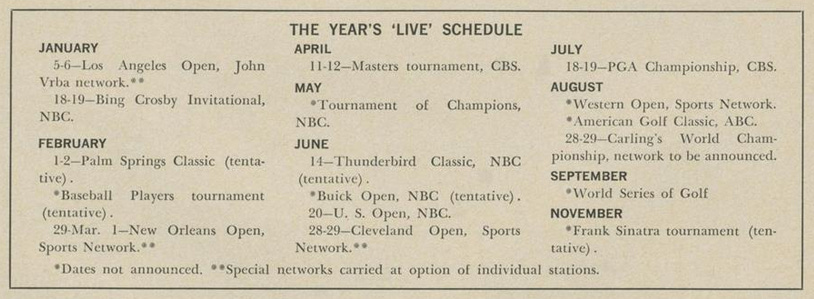
Carmichael and the Hebert brothers negotiated a television package for 1964 with SNI for $700,000 for 13 tournaments, including the Pensacola Open, the Greater New Orleans Open, the Cleveland Open, the Insurance City Open, and the inaugural National Four-Ball Championship. This money was to go into the general fund of the PGA with the understanding that it would be used to raise the sizes of purses across the PGA schedule, not just for the tournaments being broadcast.
“I don’t need that from Dick. His word and handshake are enough.”
Bailey’s hard work, and his successful results, helped him secure sponsors as well.
“Dick’s a breath of fresh air in what can be a pretty vicious business,” a programming director of a major advertising agency said to Brown. “I’d never go on the air with a network show unless I had everything I needed from a network in writing. I don’t need that from Dick. His word and handshake are enough.”
“We’ll probably lose money. But we’re doing this for prestige, to get our name out in front as an entrée to advertisers who may want to do other programs. It’s a breakthrough for us.”
Bailey quickly signed up Goodyear, Bell System, and Plymouth as sponsors for the PGA broadcasts. These companies each paid SNI $17,500 for each of the 11-minute spots on each broadcast. This amounted to $2,502,500 for SNI. In addition to the $700,000 that SNI was paying the PGA for the broadcast rights, they also paid AT&T $700,000 for the transmission of the broadcast and about $1 million for the airtime to the 180 stations carrying the tournaments. This resulted in a very slim profit margin.
“We’ll probably lose money,” Baily told Brown. “But we’re doing this for prestige, to get our name out in front as an entrée to advertisers who may want to do other programs. It’s a breakthrough for us.”
The average purse size in 1963 was $47,497. In 1964 there were 41 official events for a total of $2,301,063 in official prize money for an average purse size of $56,123. The average purse size went up again in 1965, to $77,644, again due to television revenue, and SNI was a leading force in broadcasting tournaments and providing that television revenue.
By 1967, SNI was broadcasting a dozen tournaments including some of the big ones including the Western Open, Westchester Classic, Doral Open, and the Greensboro Open. Each of these tournaments featured a lucrative $70,000 purse. At the Western Open, Frank Beard, who teed off very early on Saturday and Sunday, joined veteran SNI announcer John Derr in the tower overlooking the 17th green at Beverly Country Club in Chicago, IL.
Through the years television has provided the riches that the PGA have enjoyed. These riches, the result of the popularity of Arnold Palmer, have only increased, especially during the Tiger Woods era. Now, the PGA TOUR television revenues are estimated to be over $700 million annually. Only time can tell if this kind of growth will be affected by the contentious times we currently find ourselves in concerning men’s professional golf.
Follow us on Facebook, Instagram, Twitter, YouTube and Threads
BONUS STORY
Dick Bailey and the Sports Information Incorporated broadcasting company hit the excitement jackpot in 1965 with their coverage of the action on the PGA circuit. About 9 million viewers witnessed, via the network broadcast of the Pensacola Open in March, the longest sudden-death playoff to that point in PGA history. Doug Sanders holed a 35-foot putt on the third playoff hole to defeat Jack Nicklaus.
In May, at the Greater New Orleans Open, SNI captured Dick Mayer hitting an approach shot on the final hole that went into the cup to win the $20,000 first prize check. In June, the final round broadcast beamed out the action when Dan Sikes stroked in a 35-foot putt to edge Tony Lema by one stroke in the Clevland Open. SNI cameras captured Billy Casper defeating Johnny Pott in a playoff to capture the Insurance City Open in Hartford, CT.
These exciting finishes, transmitted to millions of viewers across the country, provided the prestige that Dick Bailey craved when he first struck his deal with the Hebert brothers and the PGA in 1964.
The Tour Backspin Show with our guest, Chuck Courtney will be available next week to premium subscribers.
Listen to The Tour Backspin Show podcast on Substack with the above links, or on Spotify, Apple Podcasts, Google Podcasts, or iHeart Radio.
Thanks for reading! Please help us grow by sharing this article with your friends and family.
Or, share this link.
WHAT HOLE IS IT?
Are you on the leader board?
Congratulations to Alan Wrzesien who correctly identified #7 at TPC Sawgrass in Ponte Vedra Beach, FL, in last week’s WHAT HOLE IS IT? contest. Alan beat out four other correct answers in the random drawing and a prize pack is on its way to him. Check out the 2023 leader board and scroll down for your chance to win in this week’s WHAT HOLE IS IT?
We’re introducing the Herbert C. Leeds Trophy, a perpetual trophy that will be displayed at the Tour Backspin World Headquarters and will feature the name and year of the winner with the most correct WHAT HOLE IS IT? answers. We’ll post a picture after the first of the year with this year’s winners as well as the winners in 2022 and 2021.
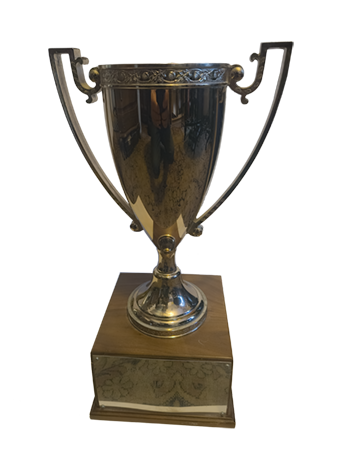
PGA TOUR Wrap Up
The PGA TOUR conducted Q-School last week and in a Monday finish, due to bad weather, five players earned their cards to play on the PGA TOUR next year. The most compelling story of the week belonged to Hayden Springer. The 26-year-old from Nashville and his wife, Emma, lost their 3-year-old daughter, Sage, in November to the genetic disorder Trisomy 18.
Springer was cruising along well within the top five and on track to win his card when he hooked his tee shot into the water on the par-4 17th hole at the Dye’s Valley Course at TPC Sawgrass. His third shot found a greenside bunker where he blasted out to three feet and saved his bogey. After a routine par on the finishing hole, he shot a one-under-par 69 and to tie for fourth and is headed to the tour in 2024. Congratulations, Hayden. What a story.
Also, congratulations to Australian Harrison Endycott who took medalist honors. The other qualifiers were runner-up Trace Crowe, Blaine Hale Jr., who finished third and has never had any status on any PGA-sanctioned tour, and Mexico’s Raul Pereda who tied with Springer.
Clips You Might Have Missed
Such a great story.
The PNC Championship had some heartwarming moments, too.
Tiger and Charlie.
And Franklin, Justin Thomas’ dog stole the show.
Tour Backspin Quiz | 1964 Golf on Television Trivia
The CBS Golf Classic (then known as the Match Play Classic) was introduced in 1964. The matches featured two-man teams playing best-ball. Who was Tony Lema’s partner? For extra points, who did they play in their first match and at what golf course?
Scroll down for answer
Swing Like a Pro
The unique putting stroke of Arnold Palmer. Notice the wrists.
I love how knowledgeable my subscribers are—and how eager they are to correct a mistake. I have corrected this mistake on last week’s post.
………not Myopia Country Club.
Merry Christmas 🎄!
-Charles O.
Thanks, Charles! It has been corrected.
-Larry B.
Good Morning Larry:
I wanted to thank you for the Tony Lema calendar, what wonderful pictures of an old friend and idle.
You are doing great work, please keep it up.
Happy Holidays and a Healthy and Happy New Year to you and your family.
You are one of those hidden jewels in the golf world.
-Gary P.
Blind Shot
Click for something fun. 👀
The 18 biggest golf rules issues of 2023 from Golf Digest.
The Tour Backspin Jukebox
A Christmas classic from 1964. Drop your dime in the slot and click HERE to listen.
Uncorked, The Life and Times of Champagne Tony Lema tells the story of one of the tour’s biggest stars in the mid-1960s. A fascinating glimpse into the traveling caravan that was the PGA TOUR during an era where the fields were full of “Mad Men” era personalities. From a hardscrabble youth spent on the “wrong side of the tracks” in the Oakland suburb of San Leandro, to the temptations of Elko, Nevada, to the bright lights of the PGA TOUR, Uncorked tells a story of determination, redemption and, above all else, a love story that documents how Betty, Tony’s new wife, provided the direction and motivation for him to become a top star. Order on Amazon.
WHAT IS HIP?
Santa is very hip.
Tour Backspin Quiz Answer:
Tony Lema was teamed with Sam Snead in the 1964 Match Play Classic played at La Quinta Country Club. They played Gene Littler and Bo Wininger in their first-round match. They were eliminated in the quarter-finals by Dow Finsterwald and Bob Goalby.
Thank you for reading this far, I know your time is valuable and choosing to spend some of it on what I’ve created is gratifying. If you want to help support the work we’re doing, please consider upgrading. It’s just $36 a year and you’ll be helping to tell the stories from one of golf’s golden ages.
Check out the Tony Lema 2024 Wall Calendar now available in the Tour Backspin Pro Shop.
The Tony Lema 2024 Wall Calendar features press photos from the 1964 Crosby Clambake (won by Lema) and Lucky International Open.
Vintage Ad
Final Thoughts
It’s so small you can’t read it on the Vintage Ad, but the copy under the photo says, “Continuing a twelve-year tradition of oil paintings of the site of the upcoming U.S. Open, this gift pack features a reproduction of a painting of Bellerive Country Club, St. Louis.”
What’s up with all these toddlers smacking golf balls (Blind Shot)?
How cute is Franklin?





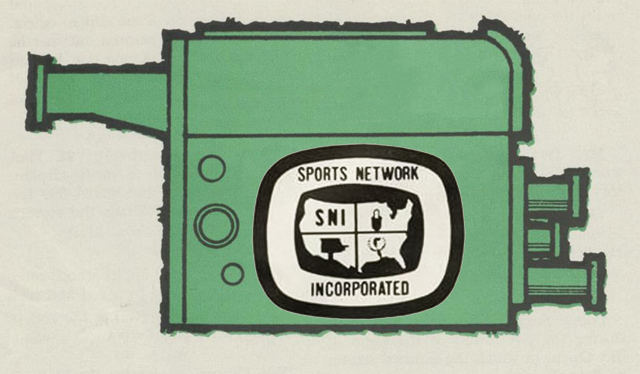
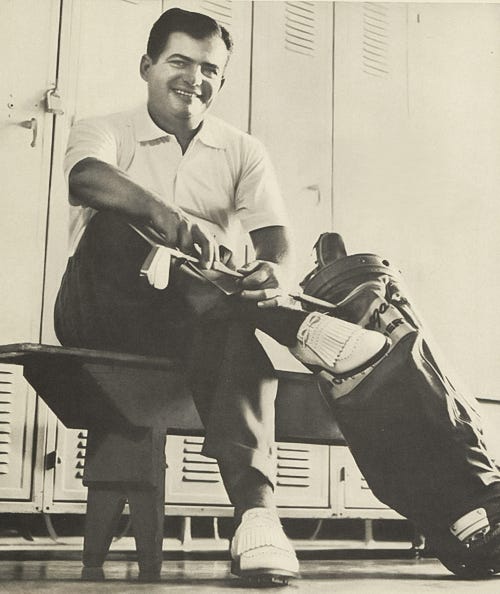
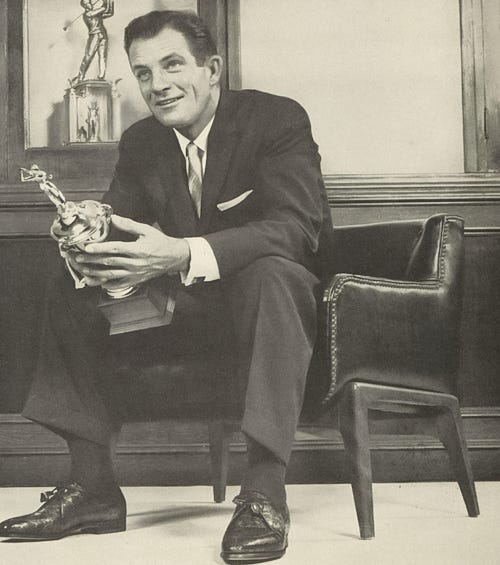
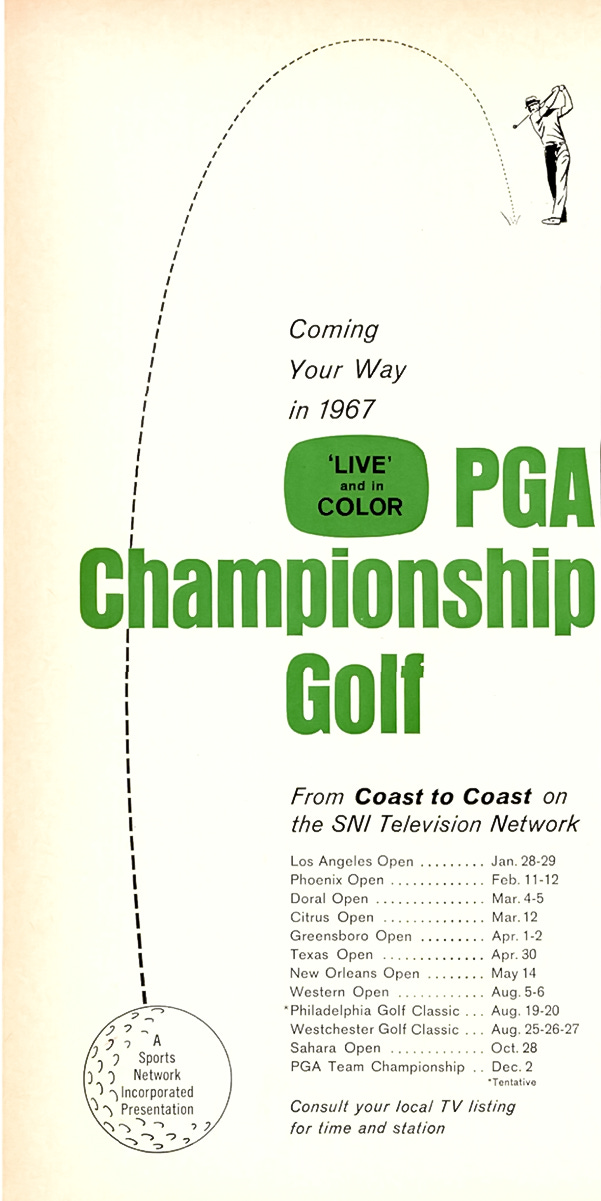
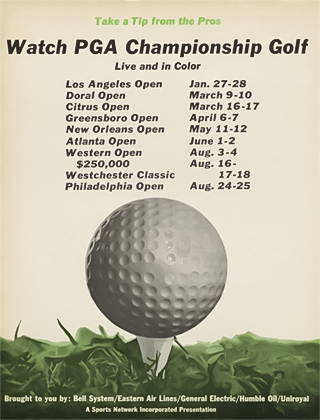
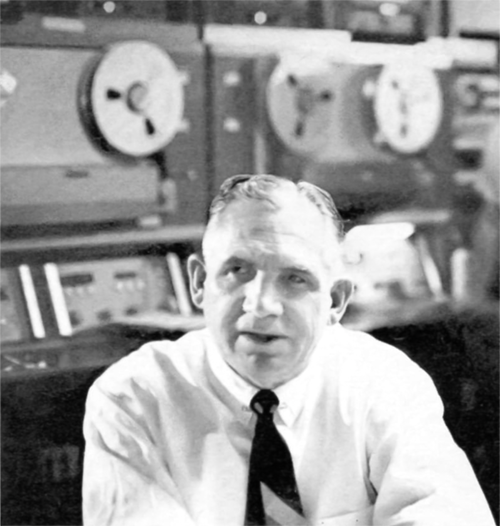
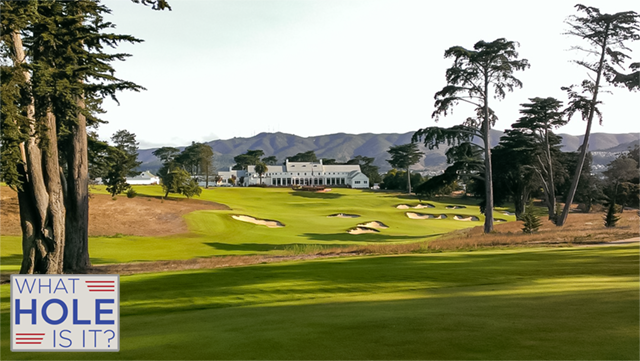
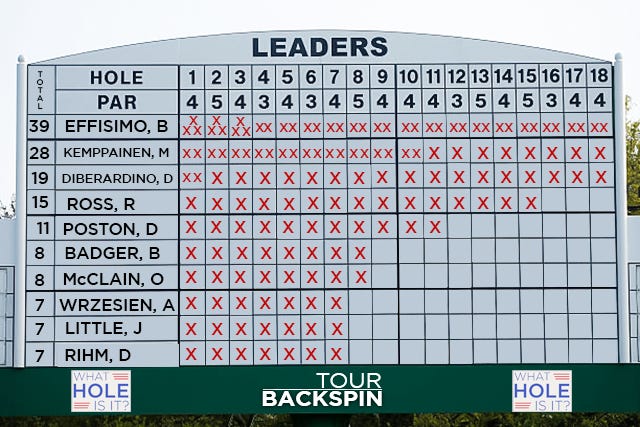
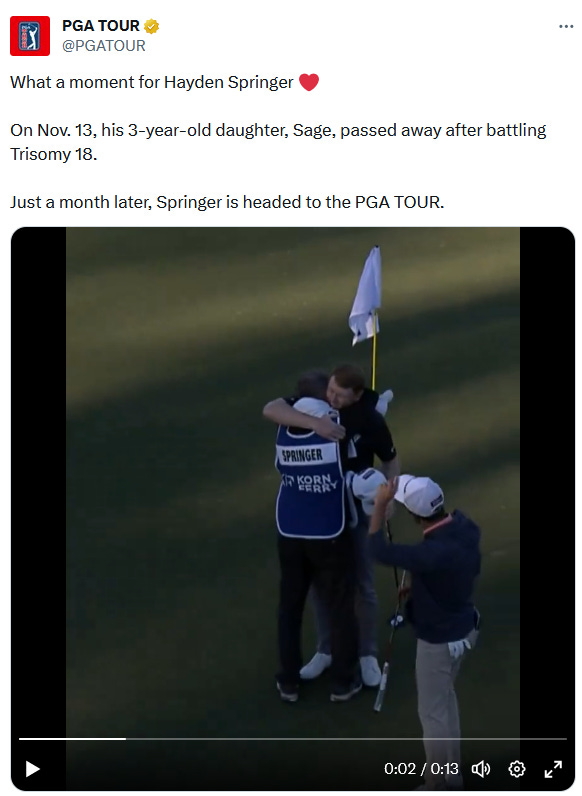
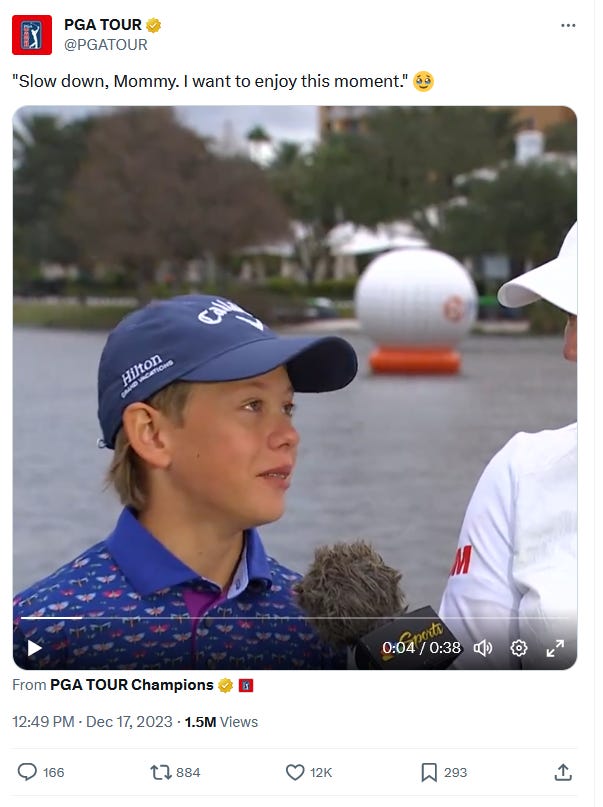

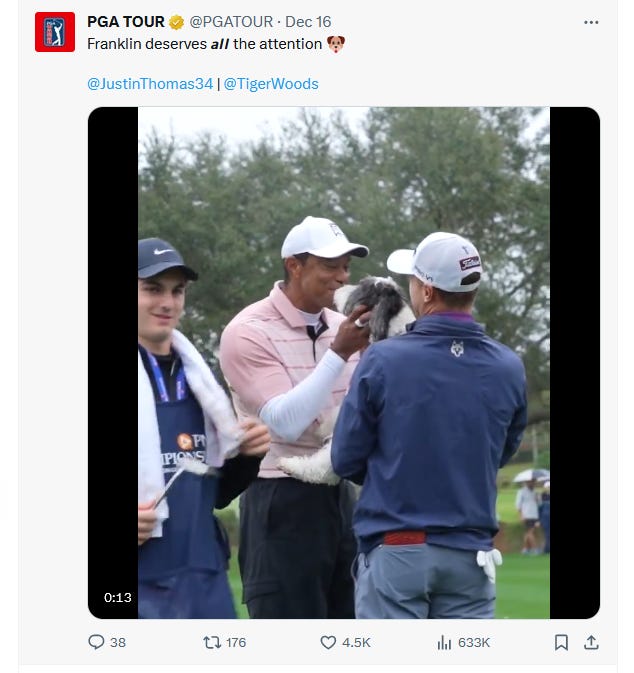




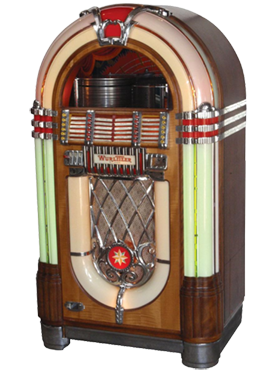
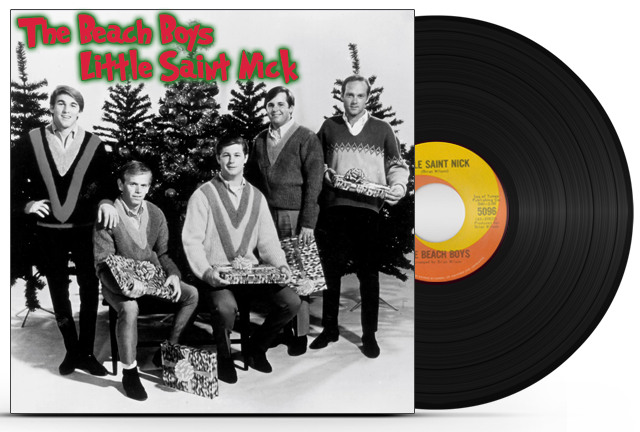
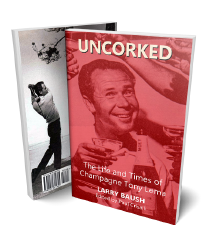


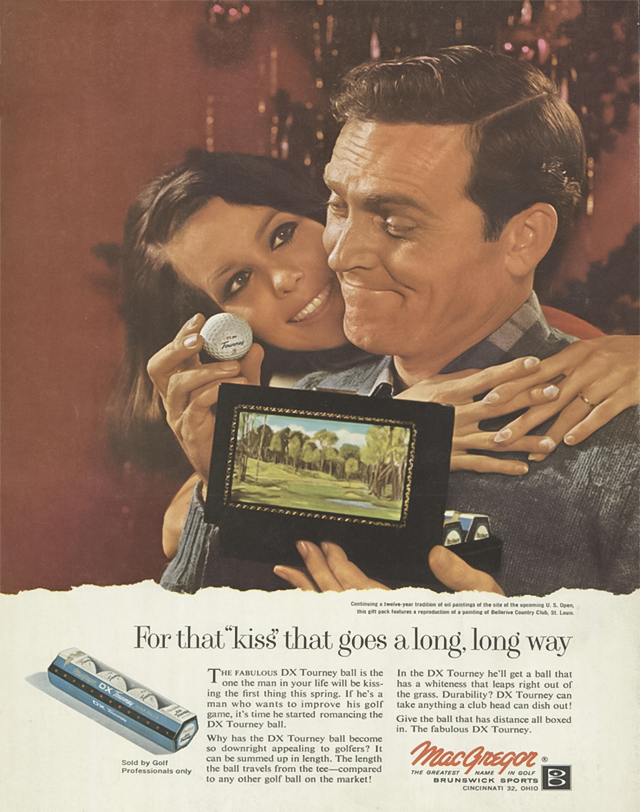
Great story about SNI, Larry. SNI was behind the times as far as TV coverage was concerned, illustrated by this excerpt from "The Age of Palmer, Pro Golf in the 1960s, its Greatest Era":
Sports Network, Inc., paid the PGA $600,000 for rights to broadcast 13 tournaments in 1965, including the Colonial. SNI syndicated its coverage to as many as 190 local stations throughout the United States.
SNI was a low-budget, no-frills operation. Jimmy Demaret and Bob Toski, whose playing days mostly were over, provided commentary. Jack Simons was the producer. Whereas Frank Chirkinian won four Emmys during his long career as the producer of golf for CBS and is a legend, Simons’ name is forgotten. Perhaps for good reason. By 1965, instant replay, stop-action, and slow motion already were in use. Simons would have none of it. “We came to cover a golf tournament. There’s no time for that stuff,” he said at the Colonial about the new technology. “It’s good gimmickry, but I think it distracts from the coverage. The time may come when we’ll have to use it, but I’m going to try to avoid it.”
Calendar a delight as was handwritten note.
Andy Brown